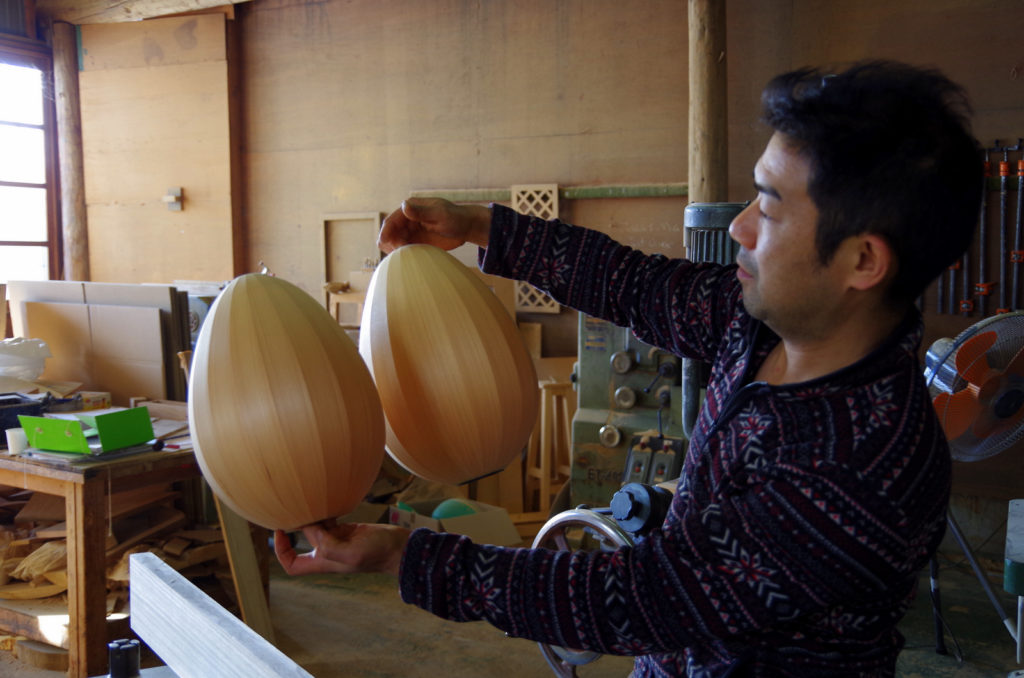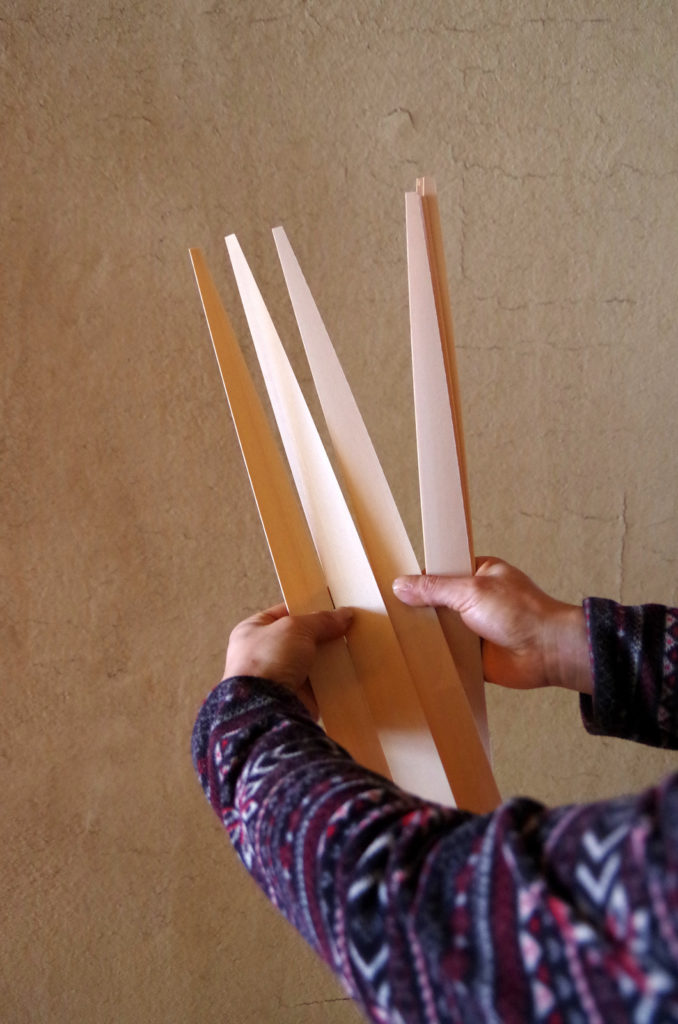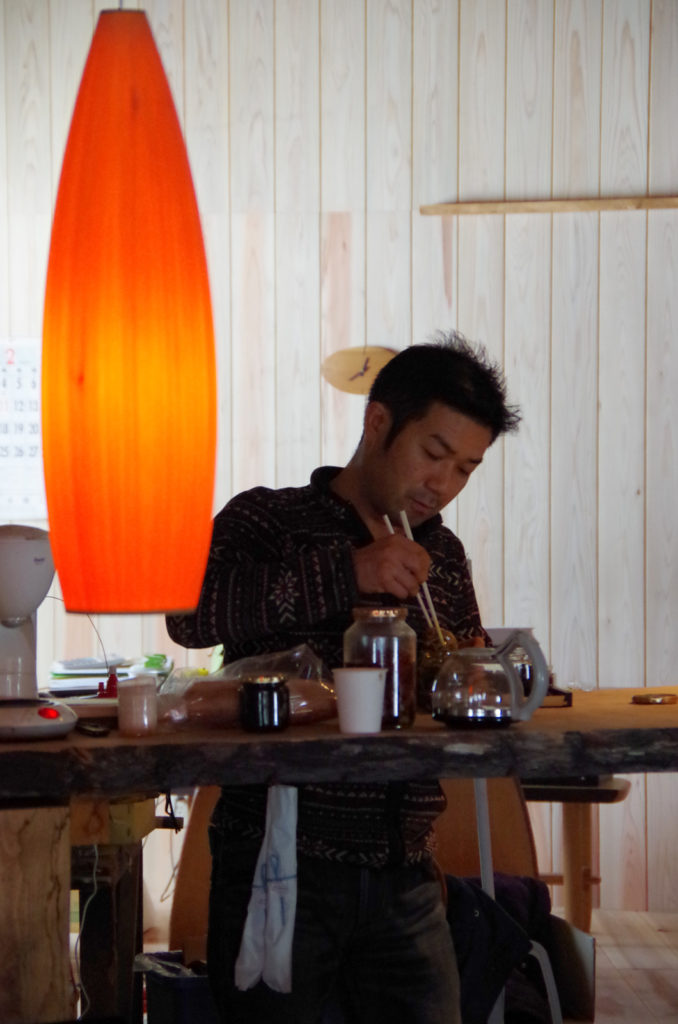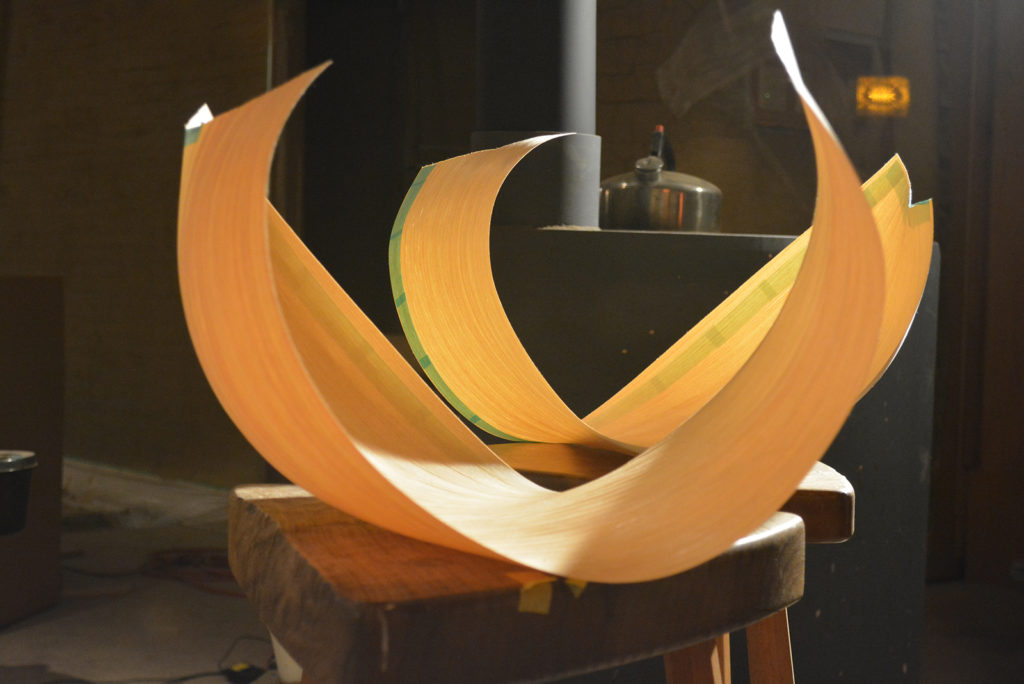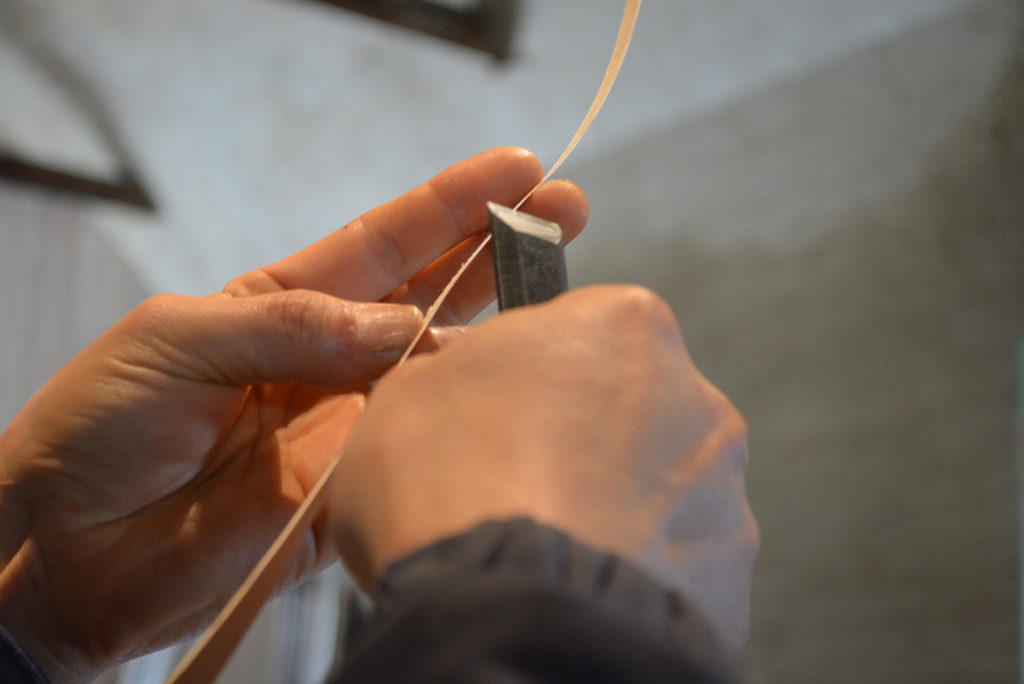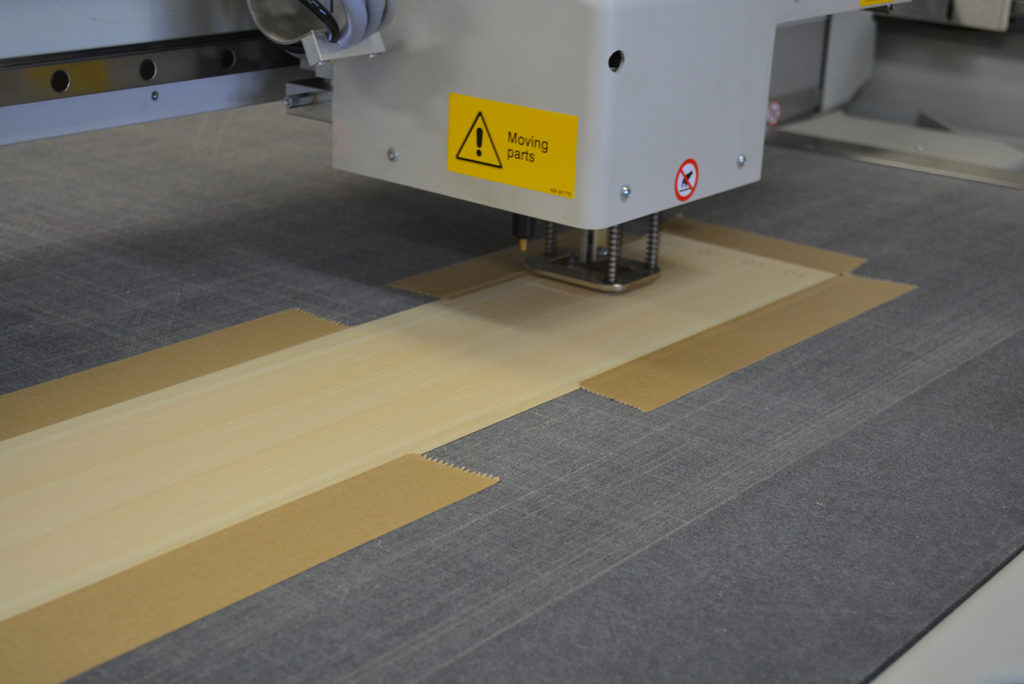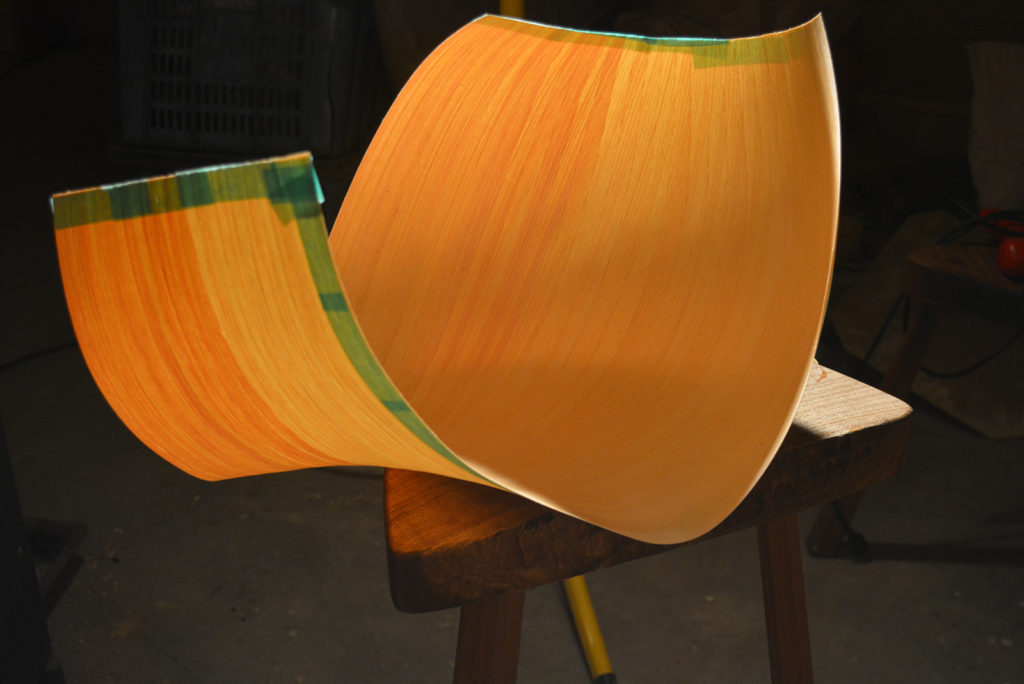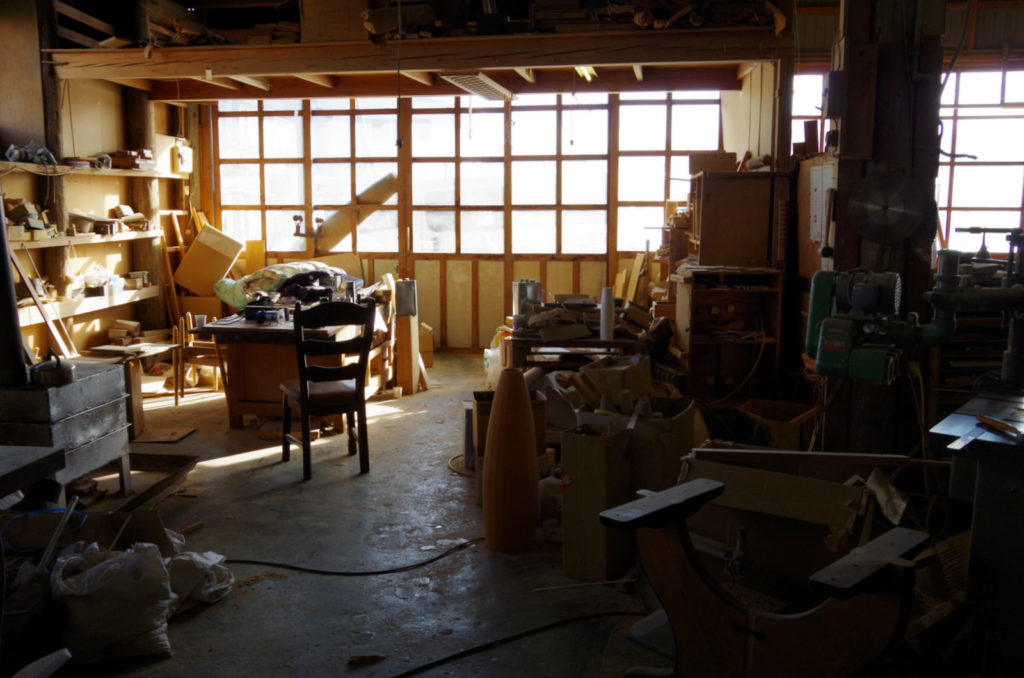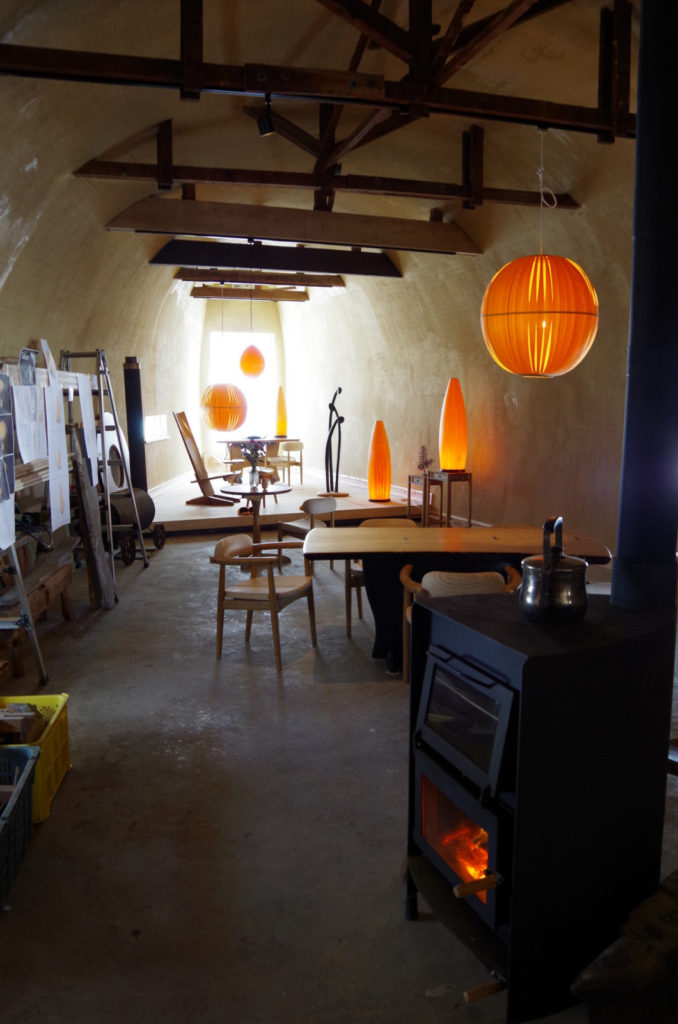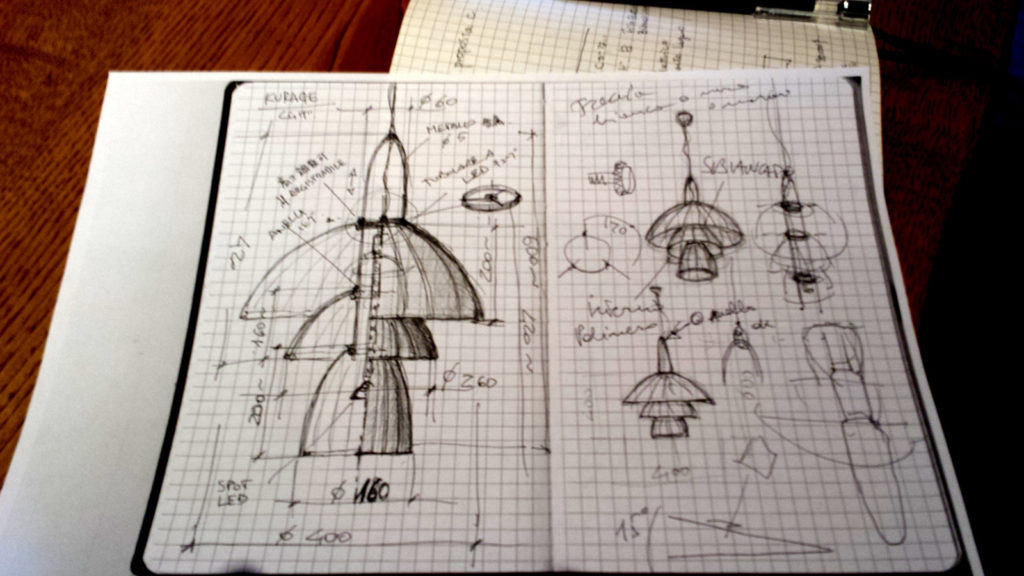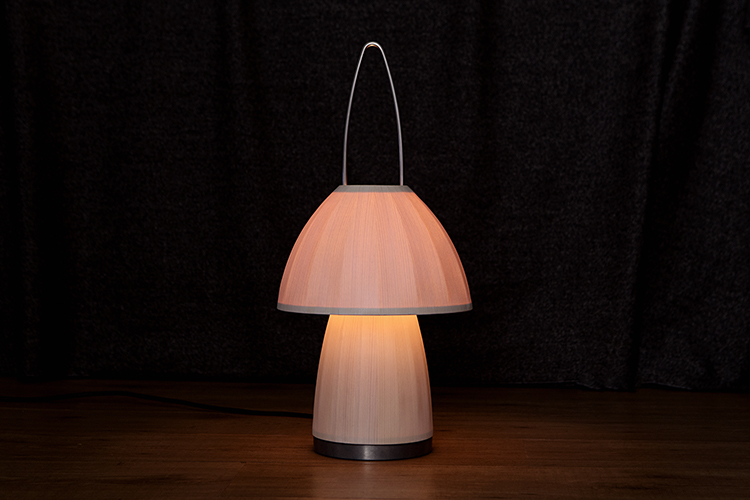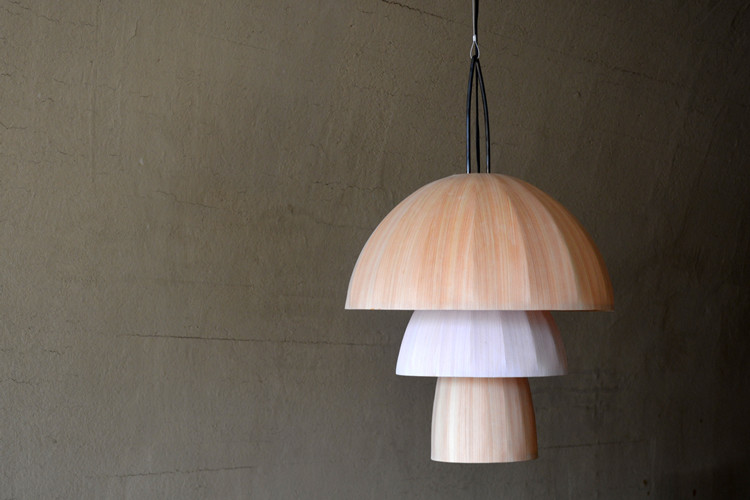Takeo Shimizu nasce in Giappone nel 1969. Dopo aver visitato diverse località estreme in tutto il mondo, campeggiando nella natura, si stabilisce nel 1997 a Hida Takayama, dove fonda l’impresa di lavorazione del legno “Daifunka” e inizia a produrre arredi. Durante i suoi viaggi ha sviluppato una forma di adorazione per il fuoco, un legame di profondo rispetto per la sua natura e per le sensazioni e le immagini che riusciva a ricordargli. Creando Tubomi, ha cercato di immortalare tutto quello spettro di immagini e stimoli in una lampada di sfoglie e lamine di cipresso. Dopo un lungo percorso di perfezionamento della tecnica, ricerca e tentativi durato quattro anni, è riuscito a migliorare la resistenza, la durevolezza e ottimizzare la selezione dei materiali. La lampada ha l’aspetto che richiama le antiche architetture greche. Il legno utilizzato è il cipresso, che è stato usato per la realizzazione di edifici sacri, come nei santuari e nei templi giapponesi. La luce delle lampade Tubomi, che traspare attraverso le sfoglie di sacro legno di cipresso, creata dall’immagine di un fuoco di campo, fa percepire il senso di un valore antico e comune a tutta l’umanità. Le Tubomi sono state usate in diverse occasioni da allora: nel 2013 sono state parte della sceneggiatura di Noh di Tatsumi MANJIRO (http://manjiro-nohgaku.com/profile/). Nel 2014, durante la collaborazione con l’architetto Terunobu Fujimori, ha realizzato delle lampade ad hoc per la sua “Storkhouse” in Austria (https://ieonline.microsoft.com/#ieslice).

He is born in Japan in 1969. After traveling around the world, from Japan to the North Pole, the Himalayas and Patagonia, while camping in the wild, Takeo settled in Hida Takayama in 1997. There he established Wood Works “Daifunka” and began making furniture.He clearly remembered the image and feeling he had while lying in the tent during those trips and staring at the campfire flames. With that nostalgia and peacefulness as the theme, Takeo began making “Tubomi”, a cypress lamp. After a continuous process of trial and error over a four year time span to improve the strength, durability, material selection, success was finally achieved. The lamp has the shape seen in ancient Greek architecture. The material used is cypress wood, which has been used in sacred buildings such as Japanese shrines and temples. The power of light which spreads through the sacred cypress wood of Tubomi lamp, created from the image of a campfire, can release sensations of an intrinsic value ancient and common to all humanity. “Tubomi” has been used in several collaborative works since then. In 2013, the “Tubomi” lamps were used as stage effects on the Noh stage of Tatsumi MANJIRO (http://manjiro- nohgaku.com/profile/). In 2014, as a collaborative work with architect Terunobu FUJIMORI, Takeo made special lamps for his work on the “Storkhouse” in Austria (https://ieonline.microsoft.com/#ieslice).
清水丈雄は、北極、ヒマラヤ、パタゴニア、日本国内などを野宿して旅をしながら感じた、炎への憧憬と安らぎをテーマに、ひのきの灯りtubomiを作り始めました。
強度、耐久性、材の選定など試行錯誤が続き、4年をかけて完成しました。形状は古代ギリシャ建築にもみられるエンタシスに導かれ、材は日本の神聖な建築(神社や寺)に使われるひのきを使用しています。
野宿の焚火から生まれたひのきの灯りtubomiを作ることを通じ、歴史や文化を貫いて原始の人類共通の価値観に触れることができました。
Tubomiはその後、いくつかのコラボレーションで展開し続けています。2013年には能楽師辰巳満次郎氏の能の舞台をtubomiで演出しました。2014年には建築家藤森照信氏とコラボレートして、氏のオーストリアにおける作品「鸛庵」のための灯りを製作しました。

